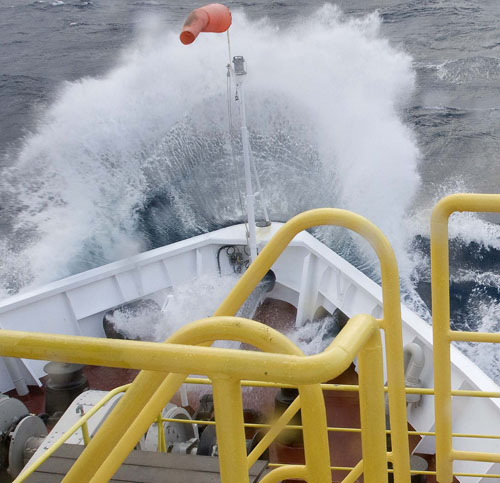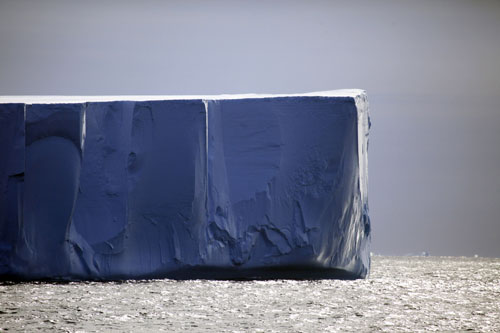Peering backSediment cores recovered by IODP scientists offer new clues to past Antarctic climatePosted May 7, 2010
New results from a research expedition in Antarctic waters may provide critical clues to understanding one of the most dramatic periods of climate change in Earth’s history. Some 53 million years ago, Antarctica was a warm, sub-tropical environment. During this same period, known as the “greenhouse” or “hothouse” world, atmospheric carbon dioxide levels exceeded those of today by ten times. Then suddenly, in geologic terms, Antarctica’s lush environment transformed into the icy realm that persists today. Now Showing ...
Check out the Wilkes Land Glacial History Expedition trailer
Newly acquired climate records tell a tale of this long-ago time. The records were recovered from Antarctica, preserved in sediment cores retrieved during the Integrated Ocean Drilling Program (IODP) Wilkes Land Glacial History Expedition Wilkes Land is the region of Antarctica that lies due south of Australia, and is believed to be one of the most climate-sensitive regions of the polar continent. In only 400,000 years, concentrations of atmospheric carbon dioxide decreased. Global temperatures dropped. Ice sheets developed. Antarctica became ice-bound. How did this change happen so abruptly, and how stable can we expect ice sheets to be in the future? 
Photo Credit: John Beck/IODP
Travis Hayden of Western Michigan University takes measurements from a core section.
To answer these questions, an international team of scientists participating in the Wilkes Land Glacial History Expedition spent two months aboard the scientific research vessel JOIDES Resolution, drilling geological samples from the seafloor off the coast of Antarctica. “The new cores offer an unprecedented ability to decipher the history of glaciation in Antarctica,” said Jamie Allan, program director in the National Science Foundation’s Division of Ocean Sciences “The climate record they preserve is immensely valuable, especially for testing how well current global climate models reproduce past history,” he added. Despite braving icebergs, near gale-force winds, snow and fog, Wilkes Land Expedition scientists recovered approximately 2,000 meters of sediment core. “These sediments are essential to our research because they preserve the history of the Antarctic ice sheet,” says Carlota Escutia “We can read these sediments like a history book,” Brinkhuis says. “And this book goes back 53 million years, giving us an unprecedented record of how ice sheets form and interact with changes in the climate and the ocean.” The new core samples collected during the expedition are unique because they provide the world’s first direct record of waxing and waning of ice in this region of Antarctica. Another major sediment-drilling program called ANDRILL Combined, the cores tell a story of Antarctica’s transformation from an ice-free, warm, greenhouse world to a cold, dry, “icehouse” world. Sediments and microfossils preserved within the cores document the onset of cooling and the development of the first Antarctic glaciers, as well as the growth and recession of Antarctica’s ice sheets. Cores from one site resemble tree rings — alternating bands of light and dark sediment preserve seasonal variability of the last deglaciation, which began some 10,000 years ago. Understanding the behavior of Antarctica’s ice sheets plays an important role in our ability to build effective global climate models, say scientists, which are used to predict future climate. The science team will next embark on a multi-year process of on-shore analyses to further investigate the Wilkes Land cores. Age-dating and chemistry studies, among other analyses, are expected to resolve questions about changes in Antarctica’s climate over short timescales (50-20,000 years). Data collected from the Wilkes Land Expedition will complement previous research from drilling operations conducted elsewhere in the Antarctic over the last 40 years. Adapted from a press release
|



For USAP Participants |
For The Public |
For Researchers and EducatorsContact UsU.S. National Science FoundationOffice of Polar Programs Geosciences Directorate 2415 Eisenhower Avenue, Suite W7100 Alexandria, VA 22314 Sign up for the NSF Office of Polar Programs newsletter and events. Feedback Form |



